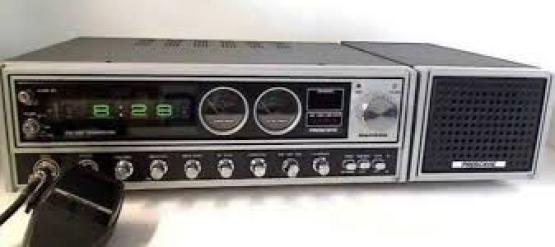CB in the Netherlands
The 27 MC band came into fashion among American truck drivers in the 1950s. The "bakkies" were used for mutual communication and broke the monotony of the long mind-numbing journeys, but people could also help each other in the event of a breakdown. This is referred to in trucker songs such as Giddy Up Go and Teddy Bear by Gerard de Vries, and in the film Convoy made in response to the CB hit Convoy by C.W. McCall from 1975 .
.
At that time, the use of these AM-modulated transmitters was illegal in the Netherlands. In the spring of 1975, action groups were set up for freer radio traffic: Stichting Antennevrij and Vereniging de 27MC. The 27MC managed to reach the tip lists of the national hit lists with a battle song. Earlier, there was also the national association of 27MC members, the VRA-NCBHC (Association of Radio Amateurs, Dutch CitizensBand Hobby Club). This association also turned directly to politics.
It was not until 3 March 1980 that things changed and the use of the CB band was permitted in the Netherlands. It was permitted to work with 0.5 watts, FM-modulated, on 22 channels, provided that one was in possession of a permit based on the Telegraph and Telephone Act 1904 (later incorporated into the Telecommunications Act). This was the so-called MARC permit. This stood for "Allowance Regulation General Radio Communication", a ministerial regulation that was established in 1980 under the administration of the then State Secretary of Transport and Water Management, Neelie Kroes. This permit cost ƒ 35 per year and could be applied for by anyone at the post office without a course or training and - for the first year - paid for immediately, provided that you were 14 years or older.
Strumming became an immensely popular hobby and within a short time there was also a huge crowd and it had become virtually impossible to cover long distances at normal times. Partly because of this rush, later (in 1982) 40 channels were allowed with a maximum power of 2 watts, to eventually arrive at the current CEPT standard of 40 channels with a maximum modulation of 4 watts on FM. Since 2001, AM and SSB modulation have also been released for use, with a maximum modulation of 4 watts.